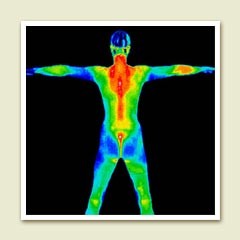 Today, more than ever before, women are more aware of breast cancer statistics and the importance of screening for breast cancer. With statistics revealing that one in eight women will develop invasive breast cancer over the course of her lifetime, early detection could not be more crucial. Unfortunately, one unpleasant or painful mammogram experience can result in women refusing to return for their annual screening. This, in turn, leads to a low compliance screening rate which does not support early detection.
Today, more than ever before, women are more aware of breast cancer statistics and the importance of screening for breast cancer. With statistics revealing that one in eight women will develop invasive breast cancer over the course of her lifetime, early detection could not be more crucial. Unfortunately, one unpleasant or painful mammogram experience can result in women refusing to return for their annual screening. This, in turn, leads to a low compliance screening rate which does not support early detection.
Mammography has been the gold standard for over 50 years and is the usual and customary recommendation for breast cancer screening. If concerns are noted in the mammogram, follow-up screening with ultrasound is typically the next step. MRI is also used although not typically for basic, routine screenings primarily due to the costs involved.
But there is another option available to women: one that is pain-free, compression-free and radiation-free. Digital Infrared Thermal Imaging (DITI), also introduced more than 50 years ago, is a non-invasive procedure that images the infrared heat that radiates from the human body. Highly sensitive, FDA registered medical cameras capture and measure the heat from the body that is naturally produced due to blood flow and then transfer these measurements into “thermal” images.
DITI is a test of vascular physiology (function) whereas mammography is a test of anatomy (structure)—which means each sees breast characteristics differently. Thermal imaging can detect subtle physiologic changes that often accompany breast pathology and other breast health issues in their earlier stages. Naturally, earlier detection can increase treatment options and offer a better overall prognosis. Thermal imaging can also be an effective adjunct to mammography if desired.
The thermal imaging procedure is quite simple and is ideal for all women, especially those who may not be ideal candidates for mammography (i.e. women under age 40 or those with implants, dense or fibrocystic tissue or have had a mastectomy without reconstructive tissue).
During the exam, there is no breast compression, and in fact, there is no touching at all, so the exam is completely pain-free. Five images are taken which incorporate not only the breast tissue but also the lower half of the neck and the underarm regions for screening of lymph nodes. Nothing touches the body, no radiation is involved and no damage is done. The entire appointment is typically 30 minutes. The images are sent electronically via a secured network to a thermologist (a certified doctor) for interpretation and reporting.
Although breast thermography is not currently recommended as a substitute for a mammography to screen for breast cancer, it is certainly a powerful tool for early detection and prevention.
For more information about breast thermography, visit DITIimaging.com or call 866-409-2506 to schedule an appointment.
by Michelle Hart of DITI Imaging
This article has been adapted from its original version which first appeared in Austin Natural Awakenings in 2012.
